Very short (and incomplete) explanation:
There are many things to understand first but I think the most important thing is to know that currents can be differentiated by their cause:
Drift current is caused by a gradient of the electrical field (voltage).
Diffusion current is caused by a gradient of concentration of carriers (i.e. electrons or holes).
Minority carriers (electrons in the p-region) reach the collector by diffusion (→ diffusion current).
It requires the base to be thin enough that only a small percentage of
minority carriers are lost by recombination (i.e. thickness of base << diffusion length; that's why it doesn't work with two discrete diodes connected back to back).
To understand the whole process I suggest to understand drift and diffusion current, minority carriers, diffusion length, recombination, pn-junction, ...
